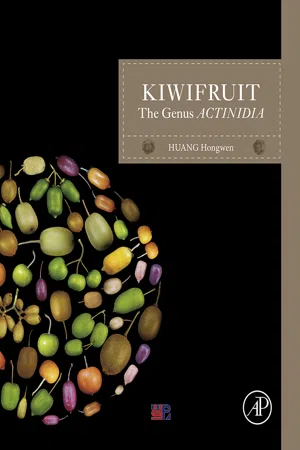
- 350 pages
- English
- ePUB (mobile friendly)
- Available on iOS & Android
About This Book
Kiwifruit: The Genus ACTINIDIA includes extensive and full coverage of scientific and applied information, ranging from basic taxonomy, population genetics, and natural resources/distribution, to domestication history and breeding/cultivars, also including further information on culture and international production and commercialization.
The book gathers information not previously available in the English language, providing an authoritative reference for professionals, including taxonomists, horticulturist, breeders, conservationists, kiwifruit technicians, college teachers, policymakers in the industry, and governments. In addition to those in the academic and professional sectors, horticultural and botanical enthusiasts will find the information presented highly accessible.
- Presents the first world monograph on the genus Actinidia (kiwifruit)
- Provides up-to-date research based on "everything kiwi", including new and critical information on kiwi germplasm and taxonomy from China, the native country of kiwi
- Includes authoritative and detailed descriptions for each species, with extensive color illustrations and information accumulated during the author's 30 years of research
Frequently asked questions
Information
Systematics and Genetic Variation of Actinidia
Abstract
Keywords
Table of contents
- Cover image
- Title page
- Table of Contents
- Copyright
- Contributors
- Foreword
- Preface
- Acknowledgments
- Introduction
- Chapter 1: Systematics and Genetic Variation of Actinidia
- Chapter 2: Species
- Chapter 3: Natural Distribution of Genus Actinidia
- Chapter 4: Domestication and Commercialization of Actinidia
- Chapter 5: Biology, Genetic Improvement, and Cultivar Development
- Chapter 6: Main Cultivars in Commercial Production
- Chapter 7: Cultivation and Management
- Chapter 8: Harvest and Storage
- Bibliography
- Index